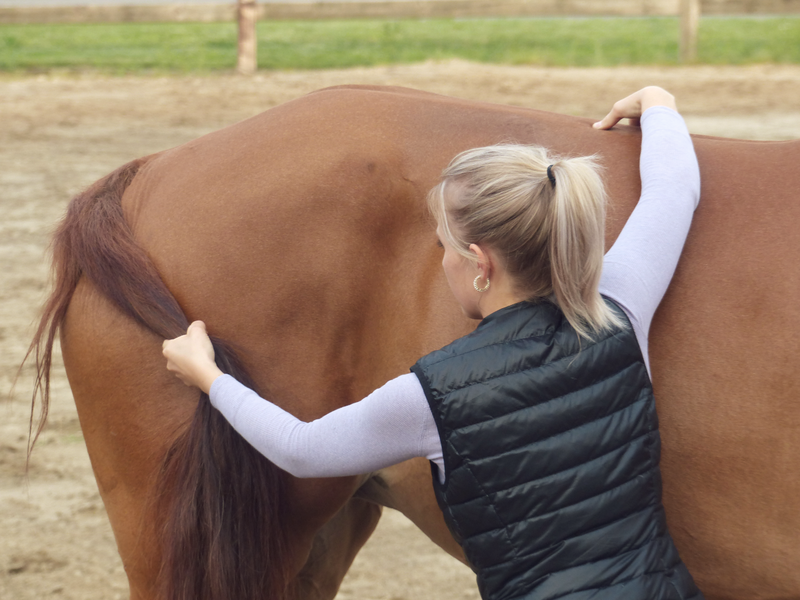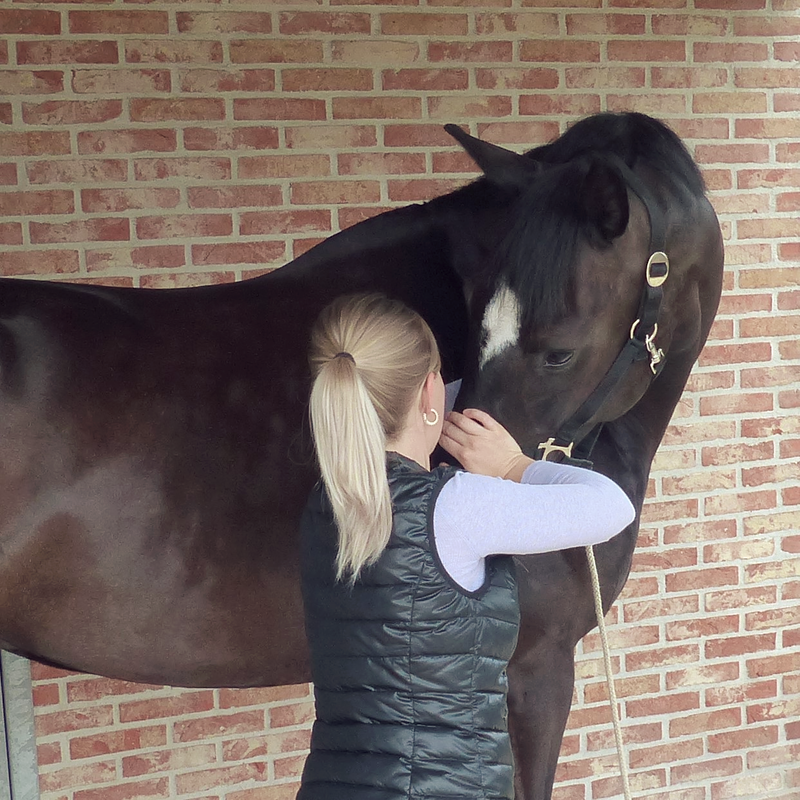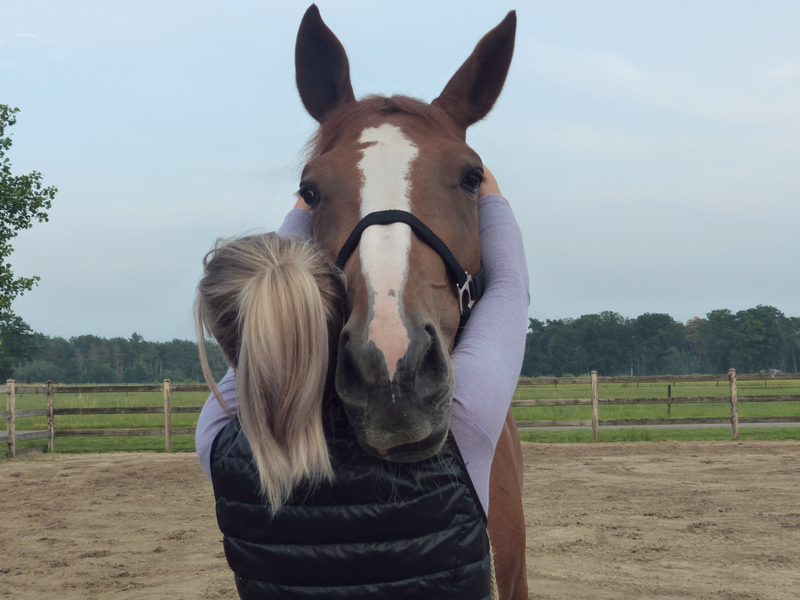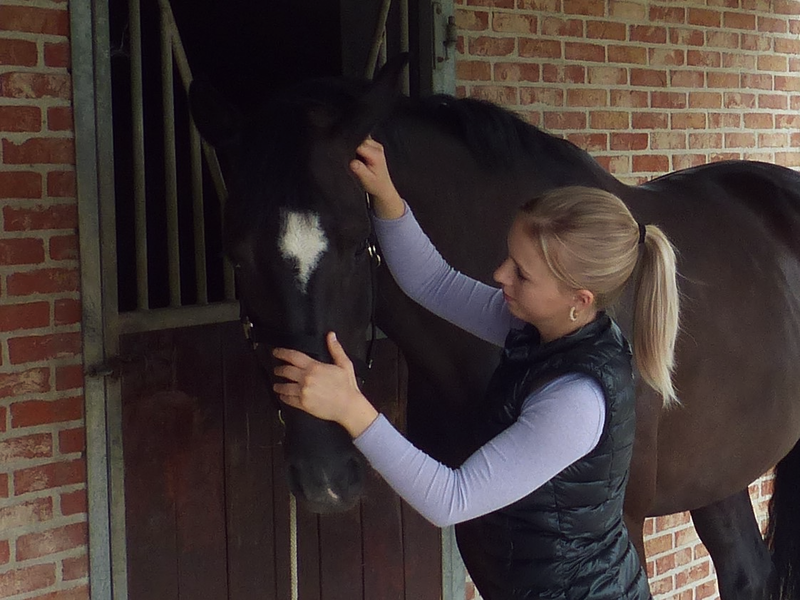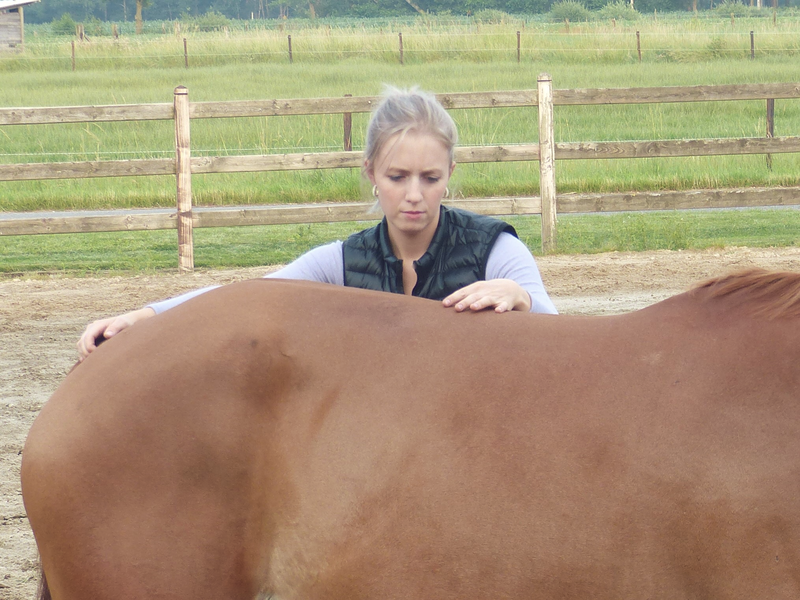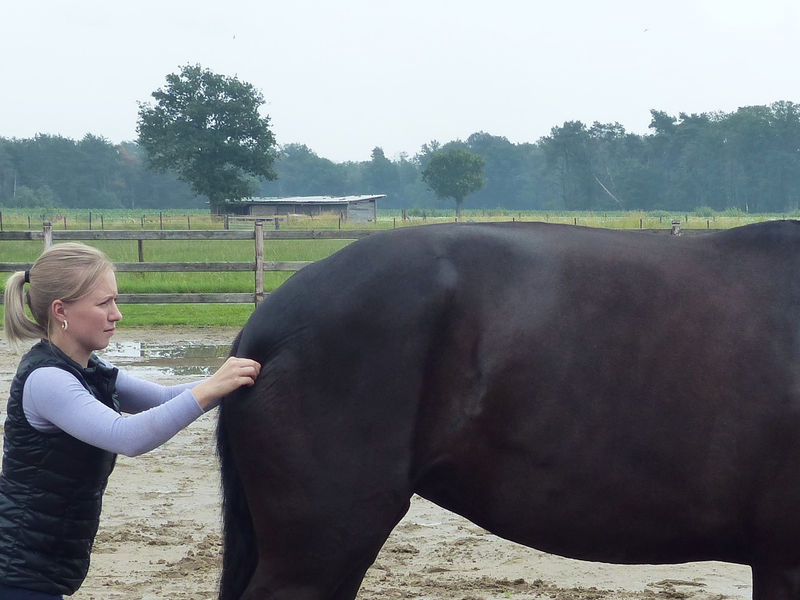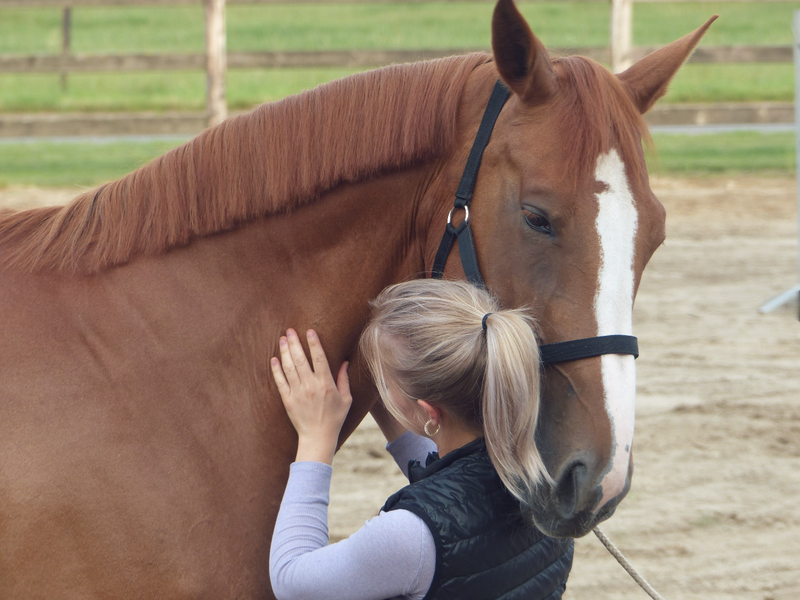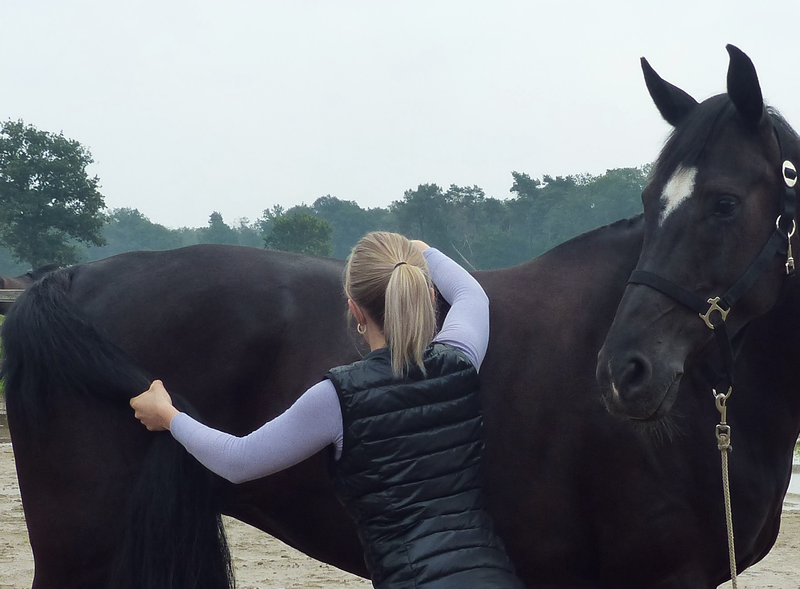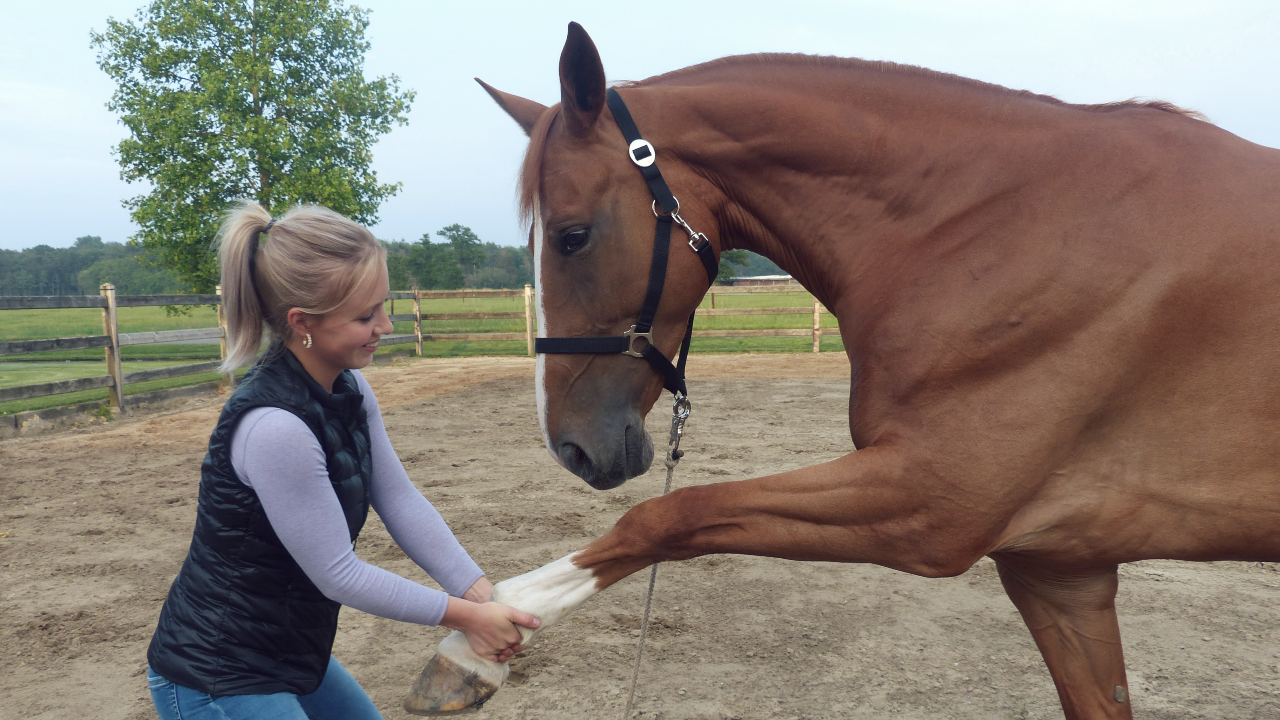EQUINE OSTEOPATHY
WHAT?
Osteopathic medicine was founded in the late 19th century by medical Dr. Andrew Taylor Still (1828-1927). Dr. A. T. Still believed that all cells, tissues and organs are connected and dependent on one another enabling the body to effectively function as a whole unit to achieve the highest possible form of health. To this day, the philosophy of osteopathy adheres Dr. A. T. Still's principles and uses it as a guide during an osteopathic assessment and treatment.
The body contains a somatic (voluntary) nervous system (to regulate movement) and an autonomic (involuntary) nervous system (to regulate internal homeostasis), both controlled by the central nervous system. Where the physiotherapist mainly works with the somatic nervous system, the osteopath works with the autonomic nervous system which is able to influence the somatic nervous system. It is important to acknowledge that there is an important relationship between the autonomic nervous system and the function of the body in health and dysfunction.
- The body is a unit, and the patient represents a combination of body, mind and spirit.
- The body is capable of self-regulation, self-healing and health maintenance.
- Structure and function are reciprocally interrelated.
- Rational treatment is based upon an understanding and integration of the basic principles of body unity, self-regulation and the interrelationship of structure and function.
The body contains a somatic (voluntary) nervous system (to regulate movement) and an autonomic (involuntary) nervous system (to regulate internal homeostasis), both controlled by the central nervous system. Where the physiotherapist mainly works with the somatic nervous system, the osteopath works with the autonomic nervous system which is able to influence the somatic nervous system. It is important to acknowledge that there is an important relationship between the autonomic nervous system and the function of the body in health and dysfunction.
WHY?
In osteopathy, maintaining wellness and preventing dysfunctions are paramount as a balanced system is less susceptible to injuries. Structure (bones, tendons, muscles, organs, etc.) determines function and vice versa. Therefore, every cell, tissue and organ in the body needs to be able to move freely, without any restrictions. This allows the nervous system as well as the blood supply and lymphatic circulation to function properly, enabling transport of oxygen, nutrients, etc. and eliminating any waste products. Hence, when all body parts are in proper relationship to each other, the body is able to function at its optimum level.
Though, osteopathy can be used as a curative treatment by eliminating or decreasing existing imbalances. These imbalances might be due to for example stresses, visceral tension, injuries, scars, signs of ageing, an ill-fitting saddle or a poor posture of the rider, all which affect body structures. Hence, when a body structure is affected, the function will be adversely affected causing loss of mobility or blockages (e.g. within the spine). When restriction of movement occurs, it can continue in other body parts allowing it to manifest itself in various phenomena at different locations and levels; mechanical, neurological, visceral, physiological and psychological, disconnecting the body.
Consequently, the blood and lymphatic circulation decreases, resulting in cells becoming weak or ill and acidification of tissues (build-up of waste products). This can cause stiffness, positional asymmetry, muscle tension, tissue exhaustion and/or abnormalities in tissue texture (broken/fair hairs, local sweat patches, local swelling, local temperature differences, etc.). This all inevitably affects the interrelated cells, tissues and organs, resulting in exacerbation of pain and reduction in performance. Compromised/irritated organs can affect the musculoskeletal system through neurological pathways and direct mechanical connections. Compromised/irritated organs may manifest as several different symptoms, such as recurrent colic, gastric ulcers, excessive gas, diarrhoea or constipation, irritability, etc.
Though, the body has a remarkable ability to compensate for or to recover from the resulting structural changes via its self-healing mechanisms. When alterations in the structural relationships of the bod parts become more extinct, the body will be incompetent to resist or to recover resulting in dysfunctions/injuries.
Though, osteopathy can be used as a curative treatment by eliminating or decreasing existing imbalances. These imbalances might be due to for example stresses, visceral tension, injuries, scars, signs of ageing, an ill-fitting saddle or a poor posture of the rider, all which affect body structures. Hence, when a body structure is affected, the function will be adversely affected causing loss of mobility or blockages (e.g. within the spine). When restriction of movement occurs, it can continue in other body parts allowing it to manifest itself in various phenomena at different locations and levels; mechanical, neurological, visceral, physiological and psychological, disconnecting the body.
Consequently, the blood and lymphatic circulation decreases, resulting in cells becoming weak or ill and acidification of tissues (build-up of waste products). This can cause stiffness, positional asymmetry, muscle tension, tissue exhaustion and/or abnormalities in tissue texture (broken/fair hairs, local sweat patches, local swelling, local temperature differences, etc.). This all inevitably affects the interrelated cells, tissues and organs, resulting in exacerbation of pain and reduction in performance. Compromised/irritated organs can affect the musculoskeletal system through neurological pathways and direct mechanical connections. Compromised/irritated organs may manifest as several different symptoms, such as recurrent colic, gastric ulcers, excessive gas, diarrhoea or constipation, irritability, etc.
Though, the body has a remarkable ability to compensate for or to recover from the resulting structural changes via its self-healing mechanisms. When alterations in the structural relationships of the bod parts become more extinct, the body will be incompetent to resist or to recover resulting in dysfunctions/injuries.
~ Optimal health cannot continue with any impediments to the free and absolute motion within the body. ~
INDICATIONS
Some examples of frequent functional problems where an osteopathic treatment can help;
|
|
In acute cases or when structural problems (damage to the musculoskeletal system or organs) are suspected, a qualified veterinarian should always be consulted first.
TREATMENT
In order to maintain health or to resolve health issues and their symptoms, the focus must be on diagnosing and treating the cause rather than the symptoms. In order to treat the horse in its totality, the anatomical, physiological and psychological elements are taken into consideration. As the hands are all the treatment tools an osteopath needs, different hands-on techniques (osteopathic manual techniques, visceral techniques and craniosacral techniques) are used to assess and treat the body’s structures and tissues on 3 levels; mobility, motility and vitality.
The goal is to find and treat the impediments to proper structure and function when the body is not capable of doing this itself to restore movement and to decrease pain. By treating the cause, the osteopath facilitates the self-healing mechanisms of the body enabling the body’s possibility to continuously adapt to changing environmental circumstances caused by internal as external influences/stressors and to combat disease.
Though, it is important to acknowledge that healing is a process. Long term benefits tend to be noticed gradually as it takes time for the body to restore its functional balance and harmony and to begin to function optimally (dependent on the horse's level of training). In order to support mental and physical health as well as physical performance of the horse at its very best, a good cooperation with a certified equine osteopath, veterinarian, farrier, dentist, saddle fitter, trainer and rider/owner is very important. In addition to this multidisciplinary approach, good stable management plays a key role in the overall health of the horse.
The goal is to find and treat the impediments to proper structure and function when the body is not capable of doing this itself to restore movement and to decrease pain. By treating the cause, the osteopath facilitates the self-healing mechanisms of the body enabling the body’s possibility to continuously adapt to changing environmental circumstances caused by internal as external influences/stressors and to combat disease.
Though, it is important to acknowledge that healing is a process. Long term benefits tend to be noticed gradually as it takes time for the body to restore its functional balance and harmony and to begin to function optimally (dependent on the horse's level of training). In order to support mental and physical health as well as physical performance of the horse at its very best, a good cooperation with a certified equine osteopath, veterinarian, farrier, dentist, saddle fitter, trainer and rider/owner is very important. In addition to this multidisciplinary approach, good stable management plays a key role in the overall health of the horse.

